Belonging to the landscape: The Art of Guy Warren
- Andrew McIlroy
- Nov 26, 2018
- 4 min read
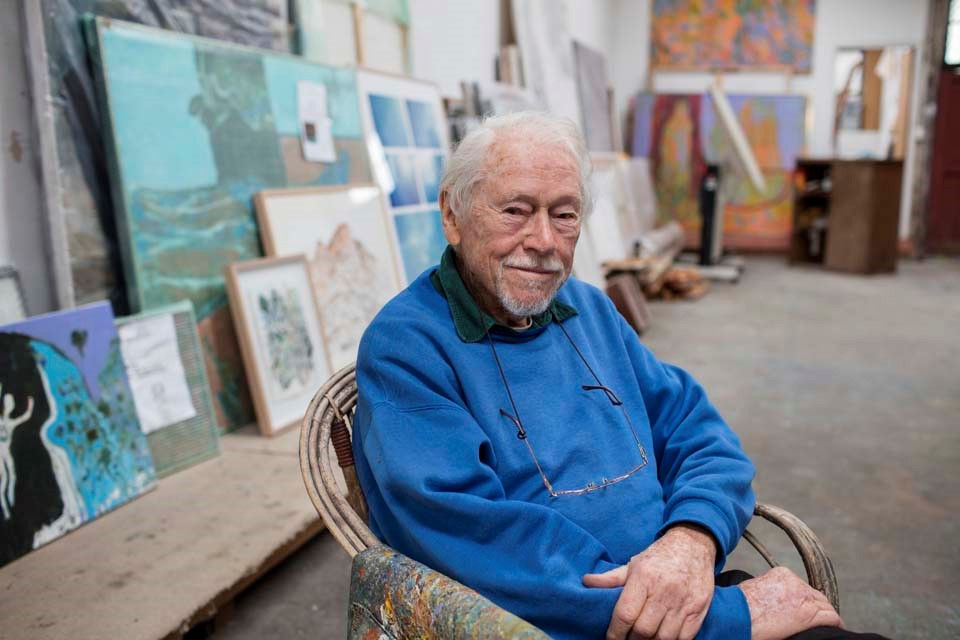
“I react to this landscape because I like the feeling of being in it. It encompasses you and one becomes a part of it”, explains artist Guy Warren AM. Sketching the distinguishing characteristics of the landscape about him, both natural and man-made, Warren from the outset places himself squarely at its centre, intimately capturing its essence and power.
Working in his Sydney studio Warren, at 97, immerses himself in his memory, spontaneously taking as his starting point a simple, primal mark on a flat, blank canvas.
Warren’s early interest in drawing the human figure in the landscape emerged while stationed at Canungra near the Queensland / New South Wales border during the early stages of World War II. Here the impressionable young artist was thrown into jungle warfare training in the thick rainforests of the region, and later into active duty in New Guinea where ‘everything seemed bigger’, and no doubt more dangerous.
“It was bloody tough”, Warren recalls “and most people hated it, but I thought the country was absolutely magnificent, thick rainforest, ravines, gullies, rushing streams and wonderful vegetation … it was such beautiful country, particularly visually. (Steve Lopes, ‘Guy Warren: Genesis of an artist’, Artist Profile, Issue 34)

Guy Warren in PNG, 1944 Photo: ABC Radio
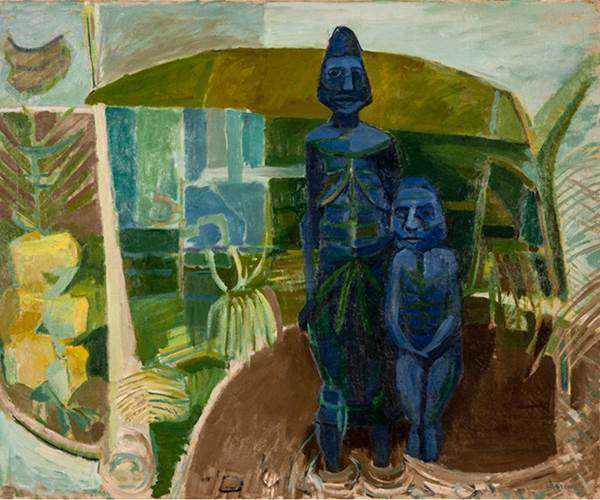
Guy Warren, 'Mother and child' 1955 Photo: S.H. Ervin Gallery, Sydney

Guy Warren, 'Mungo Brush' (1963), Pen and Ink Photo: AGNSW
After the war Warren completed studies at the National Art School, married Joy and moved to London, staying for 8 years before returning to Sydney with their two children. Here Warren searched out the landscape that had meant so much to him, buying a block of land in the rainforest down at Jamberoo, NSW, with sculptor Bert Flugelman - whom he painted for his 1985 Archibald Prize winning portrait - buying the adjoining block.
“I would go down regularly for a week or so at a time and wander through the bush, do a lot of drawing and painting. I simply just liked walking through the bush.” (Tracey Clement, 'Guy Warren', Art Guide Australia, 2017)
Inspired by his memories of life in wartime New Guinea, Warren turned to painting things that meant something to him, fondly recalling drawing the local indigenous people when he was in Bougainville and becoming intrigued by their decoration. Warren says he tried to show these peoples in their natural environment, “almost merging with it, with all their decorations. Warren says, “I thought what a great metaphor it is for belonging to the landscape and to the land”.

Guy Warren, 'Flugelman with Wingman' (1985) Photo: AGNSW
In this way, Warren sees the landscape differently to those casting the spectator as having a central role - where the viewer sets the parameters of scope, depth and detail within the vista from a specific position and the body serves as a medium for the reception and interpretation of the scene.
“Very few have thought of it as being part of them – of them belonging to the landscape. It’s like the Aboriginal attitude: they are not separate, you are the land and the land is you. That’s why I have always often tried to make a figure in the landscape.” (Lopes)
Describing his practice, Warren says,
It’s easy to put a figure in the landscape in a painting but it’s bloody difficult to make it look like the figure is part of its environment but also an inevitable part of the painting. A symbiotic connection is not easily won. I don’t do it all the time and it isn’t always successful to incorporate the figure – it’s not a dogma. At times I simply paint the landscape as landscape. I always remind myself of that wonderful phrase of Philip Guston who said, “Art can contain anything you like, except dogma of any kind.
Although painted in his London studio, Warren’s brightly coloured, semi-abstracted landscapes such as 'Rainforest, Torokina, 1959' were reminiscent of his time spent in the rainforest of wartime New Guinea. After experiencing the excitement of the artist’s life in London during the 1950’s, he returned to Australia which at this time seemed so dull and boring – with only artist Ian Fairweather providing Warren some respite.
Fairweather’s influence on the ever-curious Warren gave rise to a more familiar, muted palette of ochres, greens and umbers and a confidence to evolve his work, imbued with most often personal narratives and mythical symbols holding a multitude of meanings – such as exploration and escape, and the fusion of man and nature - over a long career.
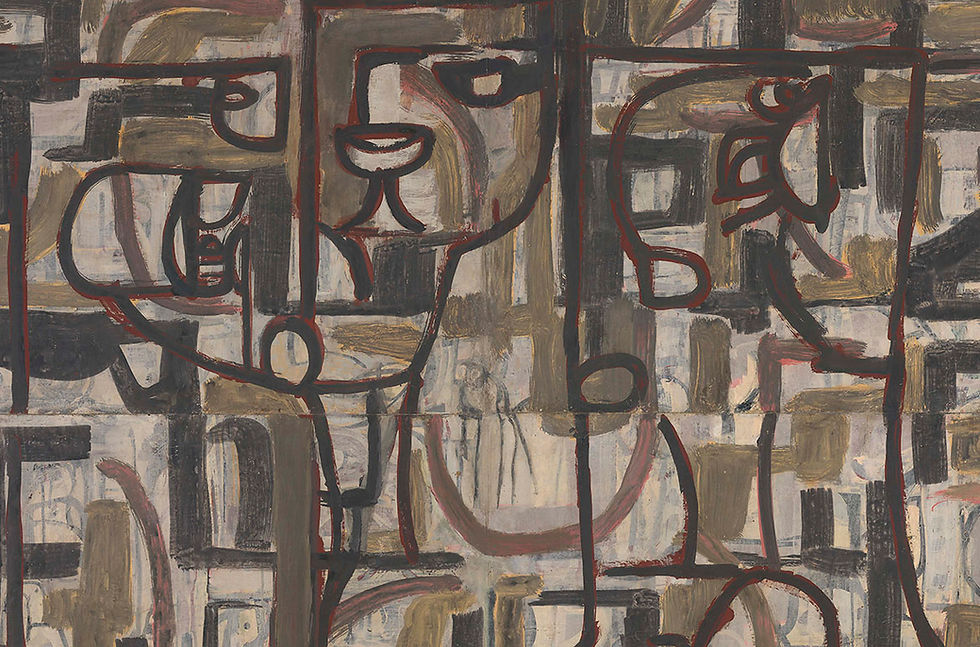
Ian Fairweather, 'Gethsemane' (1958) Photo: QAGOMA

Guy Warren, ‘Rainforest, Torokina’ (1959) Photo: McMilllan Press
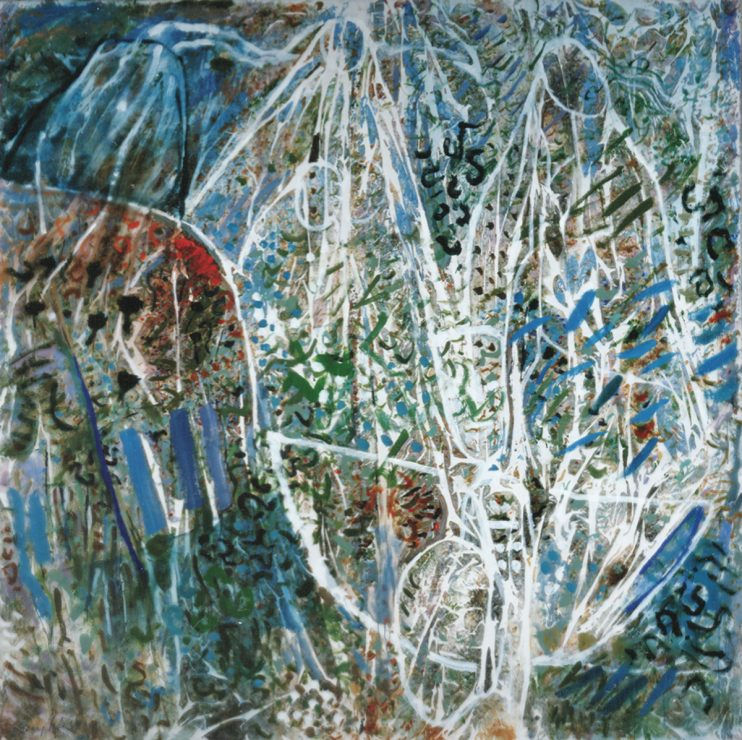
Guy Warren, 'The Arrival' (1990-1998), Private Collection Photo: The Sydney Morning Herald
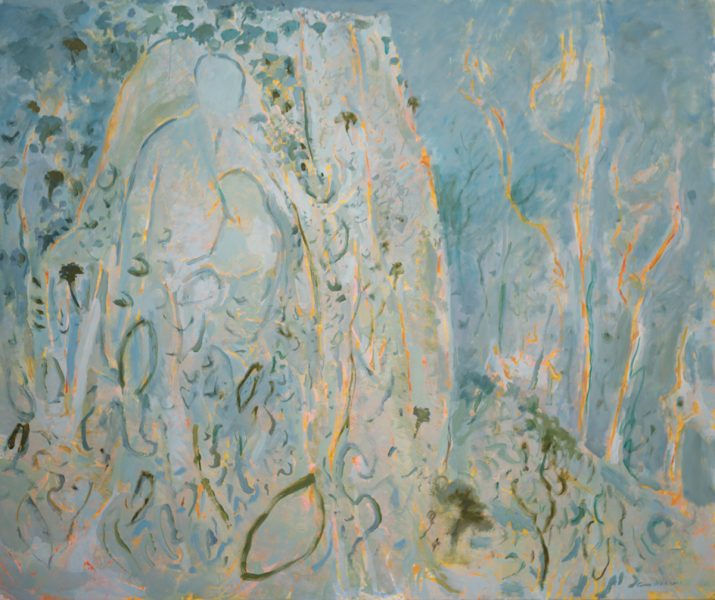
Guy Warren, 'Mother and child (Bush idyll)', 2015 Photo: Olsen Gallery, Sydney
Reflecting on his long career Warren offers,
Art is about looking for questions and trying to find answers; it's about being creative, about pushing yourself and pushing ideas. It's always difficult to start. Once you start, it becomes a process, and you keep on working. I think there is a strange compulsion to make marks on a flat surface; it is a primal urge.
The great problem in making art is this battle we all have between intuition and logic; one can become too logical about the work. If one could only get back to the innocence of childhood – where one doesn't think too much but simply does – then I think it would be a great deal better.

Guy Warren, 'Rainforest Blues' (1989 Photo: Artist Profile

Guy Warren, 'Wingman and Mist (No. 1)' (1985) Photo: Artist Profile

Guy Warren, 'Land of our Fathers' (1997) Photo: Mutual Art

Guy Warren, 'Blue Dance' (2002) Photo: Leonard Joel

Guy Warren with artist Elisabeth Cummings Photo: S.H. Ervin Gallery, Sydney
Main Photo: Guy Warren in his Sydney studio. Photo: University of Wollongong
Andrew McIlroy is a visual artist, living and working in Melbourne, Australia



Comments